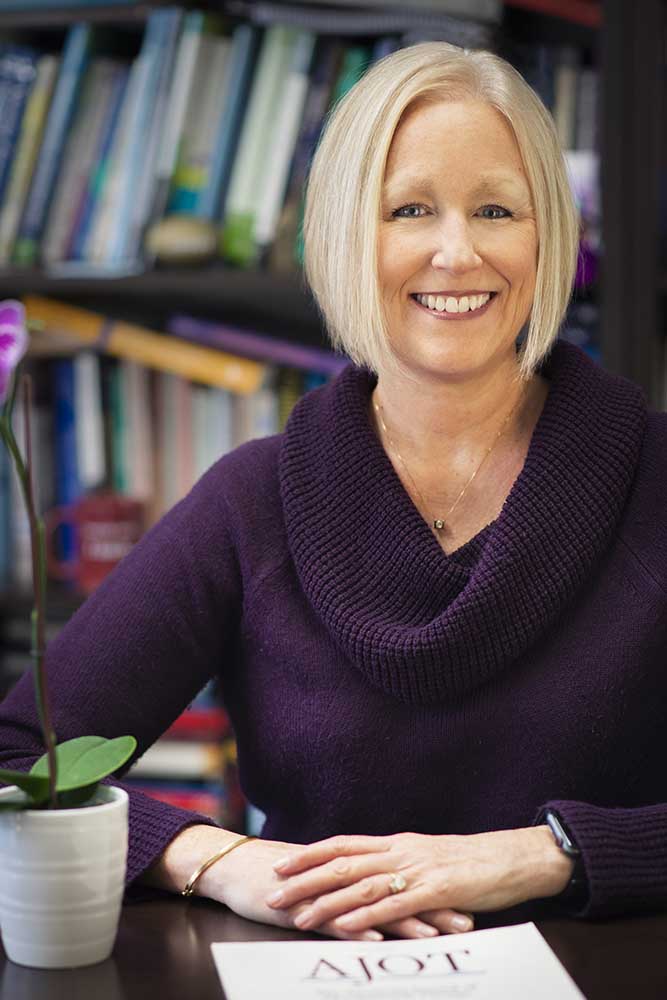On its 20th anniversary, “Occupation as Ends, Occupation as Means” as relevant as ever
December 19, 2018
How the 1998 article explained occupation-based practice to a generation of clinicians and students.
Chan in the Media Clinical Faculty
Julie McLaughlin Gray’s now-familiar article, “Putting Occupation into Practice: Occupation as Ends, and Occupation as Means,” turns 20 years old this year. During the past two decades, this seminal work has captured attention from many corners of our profession and swayed the discourse of how a generation of occupational therapy practitioners understand and explain their work.
In the late ’90s, McLaughlin Gray MA ’95, PhD ’06 was an occupational science doctoral candidate at USC, splitting her time between academia and clinical practice. An advanced student of Neurodevelopmental Therapy, she was spending a lot of time in a component-driven clinical setting and was coming to grips with a familiar struggle: how to remain true to the core of our profession by using occupation-based activities during clinical encounters.
“Purposeful activity was always interesting and meaningful to me,” recounts McLaughlin Gray, now USC Chan’s associate chair for curriculum and faculty, on a recent morning. “We, as OTs, learn an approach to solving problems, rather than any specific technique. We have a unique understanding of the complexity of action in context.”
She explains that the fundamental discourse outlined in her paper stretches back to many previous conversations with peers and mentors. One of those mentors, alumna Wendy Wood MA ’88, PhD ’95, was the acting guest editor of the American Journal of Occupational Therapy when she suggested McLaughlin Gray consider writing an article on the subject.
“Being a clinician is a big part of my identity, and this article was written for clinicians,” McLaughlin Gray says.
A sense of the future
Twenty years after its 1998 publication in the American Journal of Occupational Therapy, it’s rare to find someone in our profession unfamiliar with the piece. It is commonly found in graduate-level occupational therapy curricula, and a cursory ProQuest search shows more than 60 citations of it within scholarly literature, both within the realms of occupational science and occupational therapy as well as disciplines including gerontology, substance abuse treatment, motor behavior and child neurology.
“Of course, some of the most exciting moments are when I get an email from someone internationally, or see the work cited in a journal,” says McLaughlin Gray. “But probably the most important thing to come of this, for me, is that it crystallized something in my own thinking and perspective.”
She says it was sometime around the article’s publication that she finally made peace with leaving behind the notion of OTs as upper extremity specialists. That realization freed her to move toward applying the broader ideals of occupation-driven practice, and to comprehending the significance of occupations in the grand scheme of people’s lives.
“What you really want is to plug into passion, identity and hope. If you can do that, at the end of the session there is an outcome that resonates with [the client] as a person, and gives a sense of the future and what’s possible.”
McLaughlin Gray’s article continues to serve as a poignant reminder of what’s possible when occupation is kept at the center of practice.
“Putting Occupation into Practice: Occupation as Ends, Occupation as Means” is available free online at doi.org/10.5014/ajot.52.5.354.
⋯
Next by tag Chan in the Media ⟩ Clinical ⟩ Faculty ⟩






